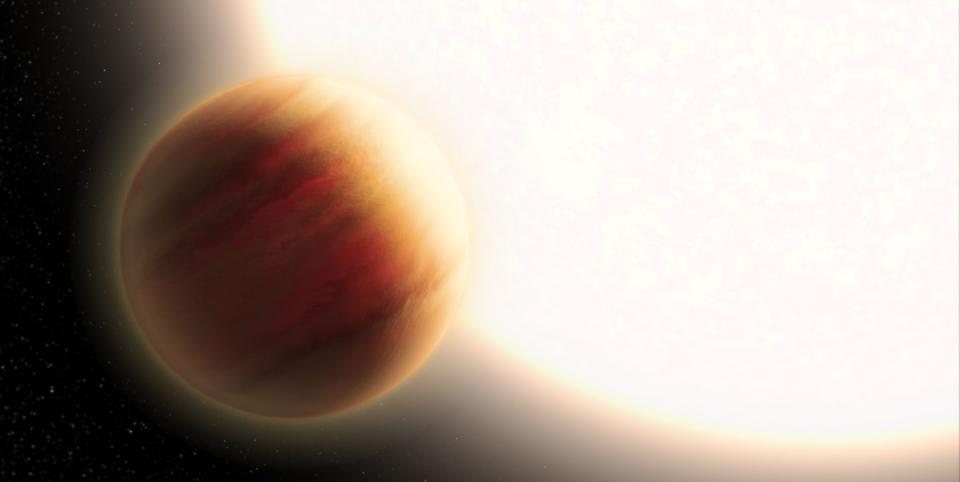This Hot Jupiter Has a Bright Yellow Sky, and Scientists Don't Know Why

An odd exoplanet with a yellow sky is the first to be discovered without evidence of Rayleigh scattering, the atmospheric phenomenon that makes Earth's sky blue.
WASP-79b orbits an F-type star 780 light-years away in the constellation Eridanus.
The exoplanet also has a strange polar orbit around its star.
The puzzling color of a distant exoplanet's atmosphere has left astronomers completely perplexed.
Astronomers at John's Hopkins University's Applied Physics Laboratory were puzzled to find that the skies on WASP-79b, a "hot jupiter" circling an F-type star in the Eridanus constellation, take on a bright yellow hue. In an even more confusing twist, WASP-79b's skies seem to lack a key atmospheric phenomenon called Rayleigh scattering.
Discovered in 2012, WASP-79b has a mass of about 0.85 Jupiters and a radius 1.7 times that of Jupiter's, making it one of the largest exoplanets discovered to date. It takes WASP-79b about 3.7 days to circle its star, which is about 1.64 times the radius of our sun and lies 780 light years away.
Temperatures on WASP-79b have been measured as high as 3,000 degrees Fahrenheit, and astronomers believe that the blistering temperatures and clouds of manganese sulfide or silicate may cause liquid iron rain to fall from the sky on the behemoth gas giant.
But here's the weirdest part: Unlike Earth, there's no Rayleigh scattering on the WASP-79b. Rayleigh scattering occurs when small dust particles in the atmosphere disperse certain wavelengths of light. On Earth, blue wavelengths of light are readily scattered, making our sky appear blue.
Showalter Sotzen and her colleagues used the Hubble Space Telescope, TESS, and the Magellan II Telescope at Las Campanas Observatory in Chile to conduct a spectroscopic analysis of the planet. They published their research this week in The Astronomical Journal. Curiously, the team found that there was less absorption and scattering of blue light in the atmosphere. The blue wavelengths of light seemed almost transparent, which cued them in on the lack of Rayleigh scattering.
"Because this is the first time we've see this, we're really not sure what the cause is," Kristin Showalter Sotzen of the Johns Hopkins University Applied Physics Laboratory in Laurel, Maryland, said in a press statement. "We need to keep an eye out for other planets like this because it could be indicative of unknown atmospheric processes that we don't currently understand."
Because of its strange atmosphere, WASP-79b is on the James Webb Space Telescope's shortlist of planets to watch. Sotzen and her colleagues are looking forward to finding similar exoplanets so they can unlock the secrets of WASP-79b's strange yellow skies.
You Might Also Like

 Yahoo Sports
Yahoo Sports 